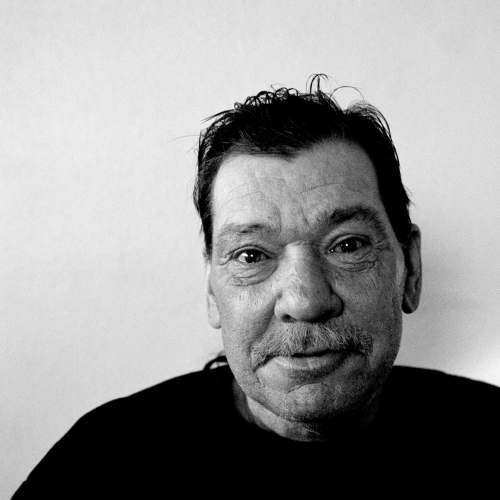By Tim Covi
With the Mayoral elections around the corner, we wanted to ask candidates for their opinions on an often under-discussed topic in municipal elections: homelessness. Over the past few years, Denver’s homeless population has sky rocketed, going from 3,954 people in 2007 to 6,656 in 2009, a 68 percent increase. Service providers estimate that it has continued to rise through 2010, something we won’t know clearly until the next Point in Time survey is released later this year.
While not completely solving the problem, Denver’s Road Home—the city’s 10-year plan to end homelessness—has been instrumental in creating more housing opportunities and bringing much needed attention and resources to the homeless community. Mayor Hickenlooper was a pivotal part of garnering support and funding for the plan.
We asked every candidate two questions to see how they’ll approach the issue of homelessness. Twelve of the 14 candidates answered by press time. Additional responses might become available on our website at: www.denvervoice.org
 Mayor John Hickenlooper discusses Denver's 10-year plan
Mayor John Hickenlooper discusses Denver's 10-year plan
By Tim Covi
Photography by Ross Evertson
From an English major in undergrad, to a master’s student in Geology, from a young entrepreneur in a derelict part of 1980’s Denver, to the Mayor’s office, John Hickenlooper’s path to politics has been anything but direct. In office, he has led this city through huge changes and growth. He’s pushed for greater accountability in sustainable development, in green house gas emissions, and in police department reforms.
As he embarks on the Governor’s race, we sat down with him to discuss one of the defining aspects of his tenure in the Mayor’s office, Denver’s Road Home, our 10-year plan to end homelessness.
Five years into this plan, Denver’s Road Home has accomplished several of its numeric goals in terms of providing services, though the homeless population has grown. Though well short of ending homelessness among either chronic or temporary populations, DRH has managed to bring more than 1,500 housing units online for the homeless, and has made homelessness a central aspect of community action in Denver.
The recession triggered a spike in Denver’s homeless population, which grew from 2,628 in 2005 to 6,659 in 2009, or almost a 61 percent increase. Much more needs to be done to solve the problem. Without the centralized services created by DRH, the coordination of faith based efforts to support the homeless and the infusion of money generated by DRH, this population will balloon more.
Mr. Hickenlooper talks to us about how DRH started, what motivated him to throw his weight behind it, where we need to go from here, and how successful aspects of DRH could be applied across the state.
Homeless families make up nearly 50 percent of Denver's homeless population, but only 15 percent of shelter beds accommodate families. Is enough being done to keep families together?
By Kristin Pazulski
 Karla Hood and her 20-year-old son Karron have been living together in a small motel room off Colfax Avenue since February.
Karla Hood and her 20-year-old son Karron have been living together in a small motel room off Colfax Avenue since February.
Their home is in the Volunteers of America’s (VOA) Family Motel. During the day, the sun glitters off the 70s-style lettering of the sign that still stands from the motel’s former life as Aristocrat Motel. In their room, there are two beds, a closet, a bathroom, two nightstands and a chest of drawers. The room is strewn with belongings that once filled their two-bedroom apartment, but are now confined to the two-bed motel room.
Karla, 48, and Karron had to leave their home of 20 years in February when the landlord of their subsidized housing in East Denver refused to renew Karla’s lease. “It was such a last minute situation,” she said. “I had to leave behind about 75 percent of our stuff. I couldn’t afford the storage. I just let it go. I cried a lot and prayed a lot.”
Denver’s 10-year plan has accomplished a lot since it started in 2005, but can it keep up with growing poverty?
by Tim Covi
photographs by Ross Evertson
Looking at him now, you can still vaguely make out the silhouette of Bruce Wright’s youth. He sits in a dimly lit chair in his homey ground floor apartment, shadows rolling across the walls from passing cars. Barrel chest, heavy hands, his history of work and wander is etched subtly into him like a living tattoo. A hoarse cough shakes his body for a minute and pulls us out of his story about the past. He has chronic obstructive pulmonary disease. He sips water from an old plastic coke bottle and regains composure. His eyes are meek and honest as he takes us back to Arizona, California, Oregon.
 Bruce Wright photo by Ross Evertson "I was living off and on in hotel rooms, just kickin' it around wherever I could, you know. I spent quite some time sown at 11th Avenue Hotel. I started out at $10 a night just for the bed."
Bruce Wright photo by Ross Evertson "I was living off and on in hotel rooms, just kickin' it around wherever I could, you know. I spent quite some time sown at 11th Avenue Hotel. I started out at $10 a night just for the bed."
